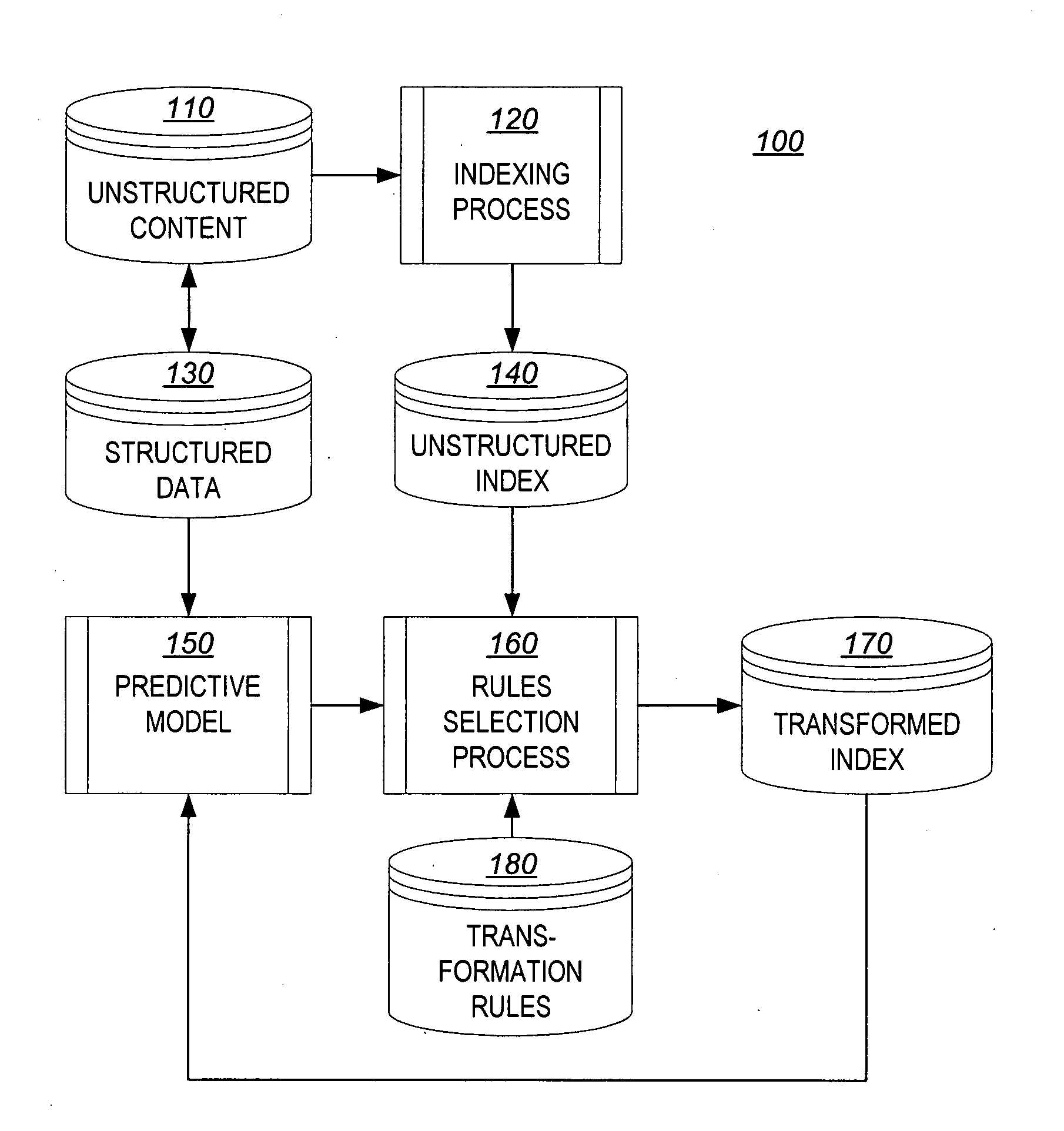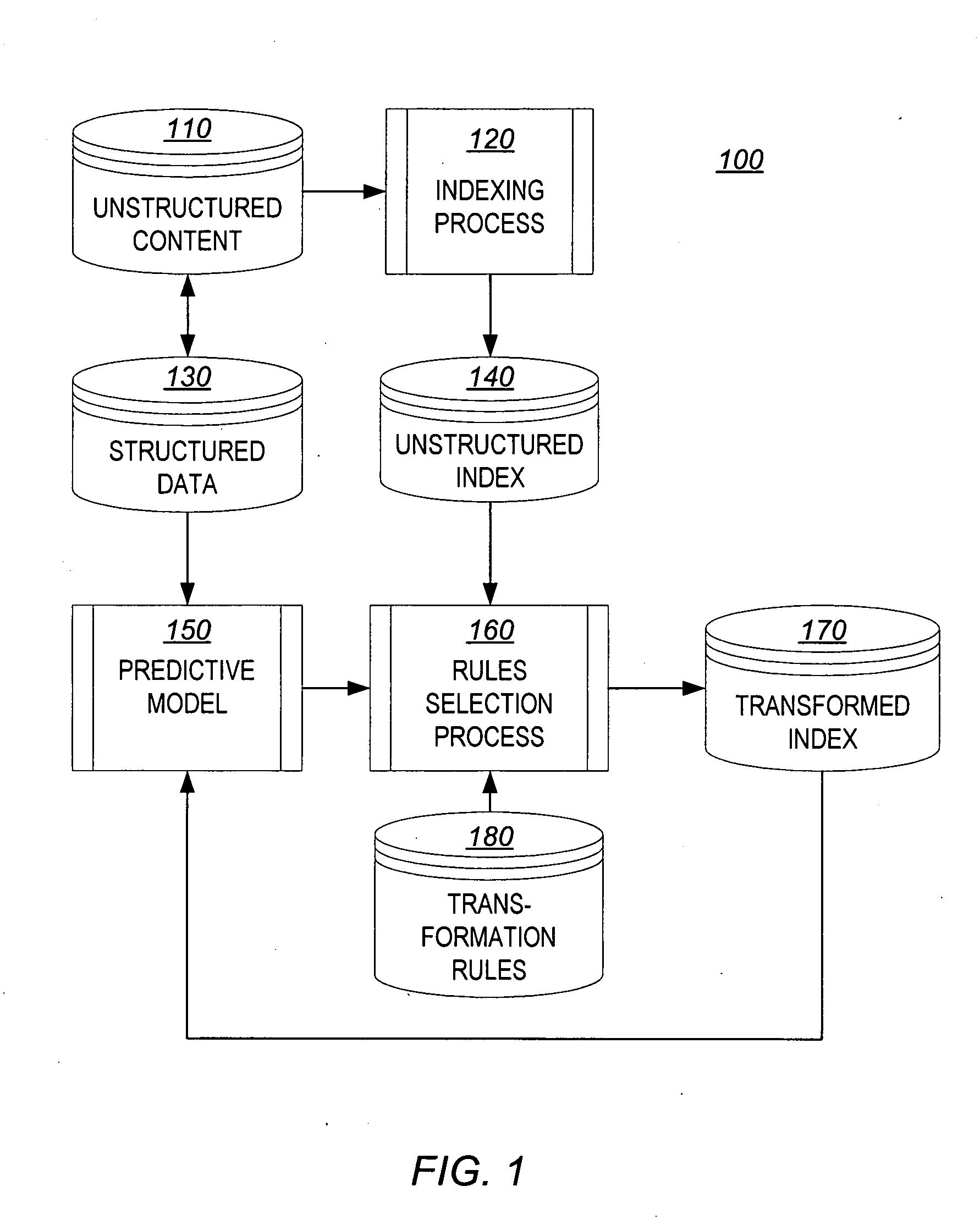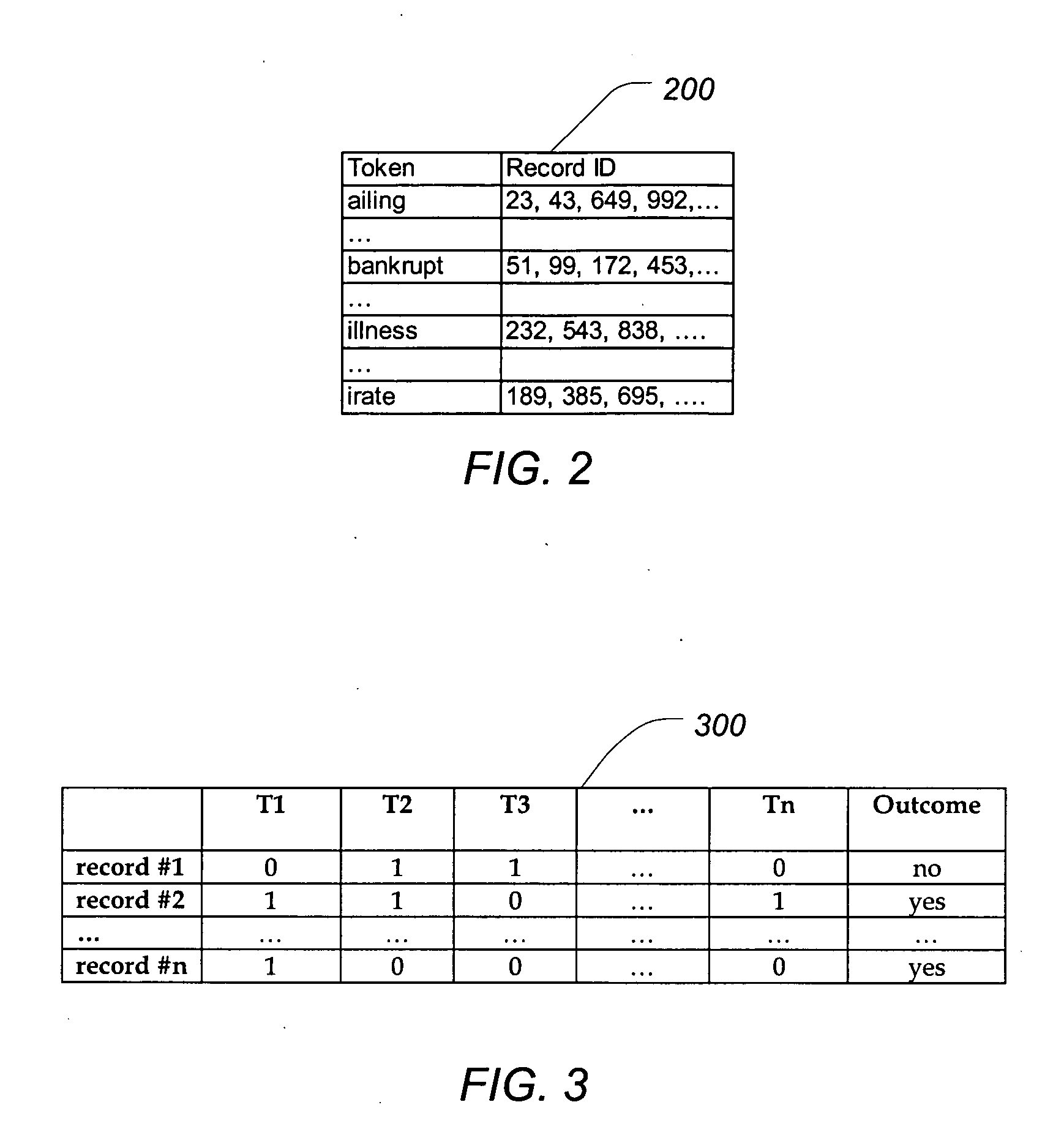Predictive selection of content transformation in predictive modeling systems
- Summary
- Abstract
- Description
- Claims
- Application Information
AI Technical Summary
Benefits of technology
Problems solved by technology
Method used
Image
Examples
Embodiment Construction
[0022] Referring now to FIG. 1, there is shown the software architecture of an embodiment of a predictive modeling system 100 in accordance with one embodiment of present invention. Generally, the predictive modeling system 100 may be used for any type of predictive modeling problem in which content transformation rules are to be applied to some set of unstructured text content prior to input to the predictive model. One preferred embodiment of such a predictive modeling system 100 is a system for predicting financial behavior of persons, based on inputs of financial information and textual information, and the present invention will be thus explained in this example embodiment for ease of understanding. However, those of skill in the art will appreciate that the present invention is not limited to prediction or classification of user behavior or financial performance, but may be applied to numerous application domains. Similarly, it will be appreciated that while the preferred embo...
PUM
 Login to View More
Login to View More Abstract
Description
Claims
Application Information
 Login to View More
Login to View More - R&D
- Intellectual Property
- Life Sciences
- Materials
- Tech Scout
- Unparalleled Data Quality
- Higher Quality Content
- 60% Fewer Hallucinations
Browse by: Latest US Patents, China's latest patents, Technical Efficacy Thesaurus, Application Domain, Technology Topic, Popular Technical Reports.
© 2025 PatSnap. All rights reserved.Legal|Privacy policy|Modern Slavery Act Transparency Statement|Sitemap|About US| Contact US: help@patsnap.com



